
Bruce Bennett was an American film and television actor who was a college athlete in football and in intercollegiate and international track-and-field competitions. In 1928, he won the silver medal for the shot put at the Olympic Games in Amsterdam. Bennett's acting career in film and television spanned more than 40 years.

Zorro's Fighting Legion is a 1939 Republic Pictures film serial consisting of twelve chapters starring Reed Hadley as Zorro and directed by William Witney and John English. The plot revolves around his alter-ego Don Diego's fight against the evil Don Del Oro.

Mysterious Doctor Satan is a 1940 American film serial directed by William Witney and John English. Produced by Republic Pictures, the serial stars Edward Ciannelli, Robert Wilcox, William Newell, C. Montague Shaw, Ella Neal, and Dorothy Herbert. The title of the serial is derived from that of its chief villain.

Drums of Fu Manchu (1940) is a 15-chapter Republic serial film based on the character created by Sax Rohmer. Though using the title of the ninth novel in the series, it actually is based on numerous elements from throughout the series to that point, cherry-picked by the writers. It starred Henry Brandon, William Royle and Robert Kellard. It was directed by the serial team of William Witney and John English and is often considered one of the best serial films ever made.

The Fighting Devil Dogs (1938) is a 12-chapter Republic movie serial starring Lee Powell and Herman Brix, the latter better known by his later stage name, Bruce Bennett. It was directed by William Witney and John English. While not often considered a great serial, as it contains much stock footage and two recap chapters, it is famous for its main villain, the Lightning—the first costumed supervillain. There is some speculation that George Lucas used the Lightning as a template for Darth Vader.
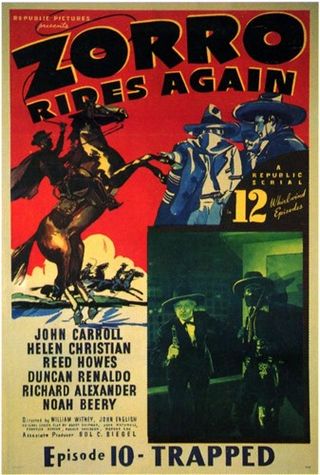
Zorro Rides Again (1937) is a 12-chapter Republic Pictures film serial. It was the eighth of the sixty-six Republic serials, the third with a Western theme and the last produced in 1937. The serial was directed by William Witney & John English in their first collaboration. The serial starred John Carroll who also sang the title song as a modern descendant of the original Zorro with Carroll stunt doubled by Yakima Canutt. The plot is a fairly standard western storyline about a villain attempting to illicitly take valuable land. The setting is a hybrid of modern (1930s) and western elements that was used occasionally in B-Westerns. It was also the first in a series of five Zorro serials, followed by Zorro's Fighting Legion (1939), Zorro's Black Whip (1944), Son of Zorro (1947) and Ghost of Zorro (1949).

The Adventures of Red Ryder is a 1940 American 12-chapter movie serial from Republic Pictures, directed by William Witney and John English and starring Don "Red" Barry and Noah Beery, Sr., based on the Western comic strip Red Ryder by Fred Harmon. This serial is the 18th of the 66 serials produced by Republic.

Dick Tracy's G-Men (1939) is a 15-Chapter Republic movie serial based on the Dick Tracy comic strip by Chester Gould. It was directed by William Witney and John English.
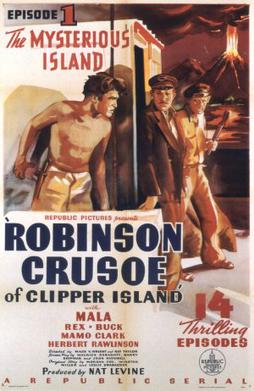
Robinson Crusoe of Clipper Island (1936) is a Republic movie serial starring Ray Mala. It was the fourth of the 66 serials produced by Republic and the last to be released in 1936. Robinson Crusoe of Clipper Island is notable for being the first Republic serial to contain another common aspect of serials—a Re-Cap Chapter, similar to a clipshow in modern television, whereby the events of the previous chapters are repeated via clips. Contrary to popular belief, this was not the invention of the concept, which had been routinely used in serial production before the release of this serial. The serial was edited into the film Robinson Crusoe of Mystery Island, which was released in 1966.
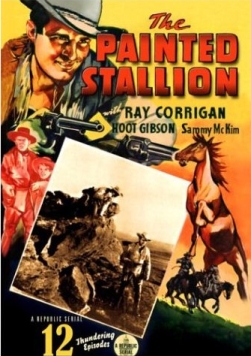
The Painted Stallion is a 1937 American Western film serial from Republic Pictures. It was the sixth Republic serial of the sixty-six made by that company. Western serials such as this made up a third of the serials from Republic, a studio that was also heavily involved in making B-Western feature films at the time.
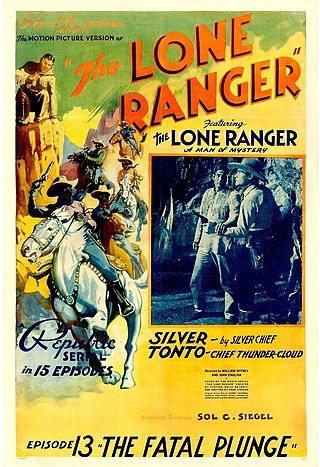
The Lone Ranger is a 1938 American Republic Pictures movie serial based on The Lone Ranger radio program. It was the ninth of the sixty-six serials produced by Republic, the fourth Western and the first Republic serial release of 1938. The following year a sequel serial The Lone Ranger Rides Again was released. The fifteen chapters of the serial were condensed into the film Hi-Yo Silver, which was released in 1940.

Hawk of the Wilderness (1938) is a Republic movie serial based on the Kioga adventure novels written by pulp writer William L. Chester (1907–1971). Kioga was a Tarzanesque white child raised on a lost island in the Arctic Circle, somewhere in northern Siberia, which was heated by thermal springs and unknown currents. Chester wrote four Kioga novels. The first, Hawk of the Wilderness (1935), was the one that was filmed as the 12-part 1938 Republic serial. (The other novels in the series were Kioga of the Wilderness, One Against a Wilderness and Kioga of the Unknown Land.

The Lone Ranger Rides Again is a 1939 American Republic serial. It was a sequel to Republic's 1938 serial The Lone Ranger, which had been highly successful, and the thirteenth of the sixty-six serials produced by Republic.

Ghost of Zorro is a 1949 Republic Movie serial. It uses substantial stock footage from earlier serials, including Son of Zorro and Daredevils of the West. This film was shot in Chatsworth, Los Angeles.
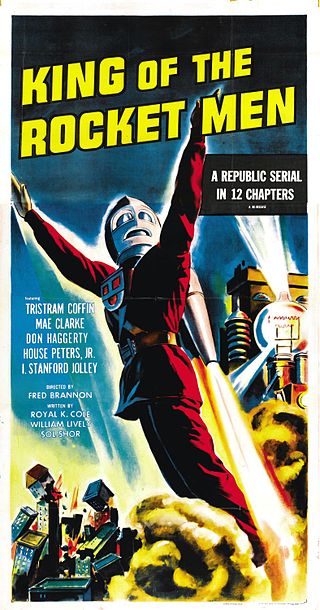
King of the Rocket Men is a 1949 12-chapter movie serial from Republic Pictures, produced by Franklin Adreon, directed Fred C. Brannon, that stars Tristram Coffin, Mae Clarke, Don Haggerty, House Peters, Jr., James Craven, and I. Stanford Jolley.

Flying Disc Man from Mars is a 1950 Republic Pictures 12-chapter black-and-white science fiction adventure film serial, produced by Franklin Adreon, directed by Fred C. Brannon, that stars Walter Reed, Lois Collier, Gregory Gaye, James Craven, Harry Lauter, and Richard Irving. Disc Man is considered a weak example of the serial medium, even compared to other post-World War II serials. In 1958 Republic edited the serial's 167 minutes of footage into a 75-minute feature, released under the new title Missile Monsters.

Fred "Snowflake" Toones was an American actor and comedian. He appeared in over 200 films in his career spanning 23 years.

Bruce Gentry – Daredevil of the Skies (1949) is a 15-episode Columbia Pictures movie serial based on the Bruce Gentry comic strip created by Ray Bailey. It features the first cinematic appearance of a flying saucer, as the secret weapon of the villainous Recorder.

Charles Quigley was an American actor.

A serial film,film serial, movie serial, or chapter play, is a motion picture form popular during the first half of the 20th century, consisting of a series of short subjects exhibited in consecutive order at one theater, generally advancing weekly, until the series is completed. Usually, each serial involves a single set of characters, protagonistic and antagonistic, involved in a single story, which has been edited into chapters after the fashion of serial fiction and the episodes cannot be shown out of order or as a single or a random collection of short subjects.
















